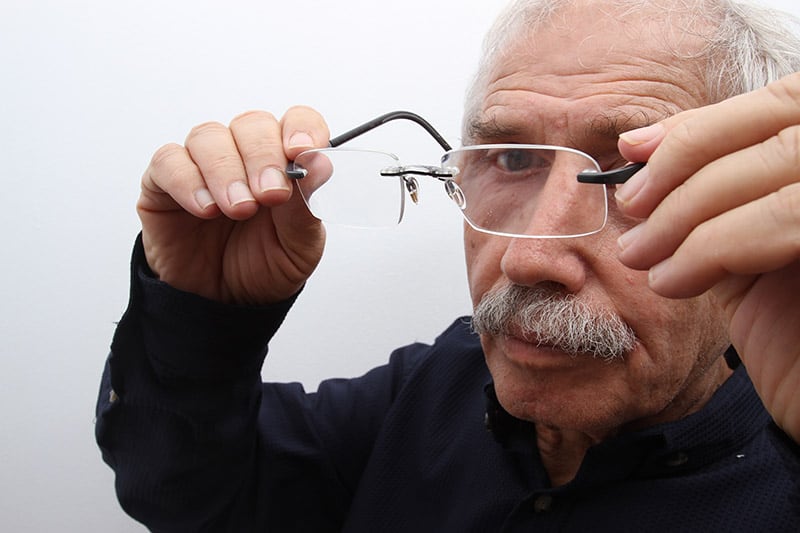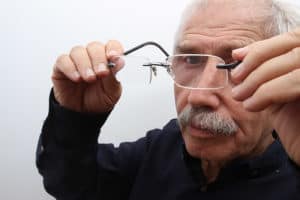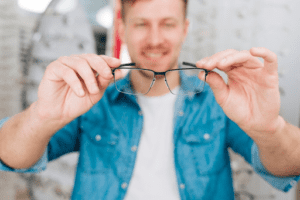In a world where eyewear is an essential part of daily life for millions, the importance of maintaining glasses in optimal condition cannot be overstated. Not only does well-kept eyewear enhance visual clarity, but it also contributes to environmental sustainability. Discarded eyewear, often damaged and no longer usable, poses a significant environmental challenge. However, prevention can be the key to reducing waste and promoting a more eco-friendly approach to eyewear.
Environmental Implications of Discarded Eyewear
When eyewear reaches the end of its lifespan, it frequently finds its way to landfills, adding to the mounting waste crisis. Each pair of scratched lenses or damaged frames contributes to environmental problems, from non-biodegradable plastic waste to the energy-intensive production of new glasses.
Role of Prevention in Reducing Waste and Promoting Sustainability
Prevention stands at the forefront of reducing waste and promoting sustainability in the eyewear industry. By understanding the common reasons glasses lenses are damaged and adopting proactive strategies, individuals can extend the lifespan of their eyewear, minimising the need for frequent replacements.
At this point, it’s essential to introduce a solution: Reglaze 4 U. Our services focus on reglazing glasses, offering a sustainable alternative to discarding damaged eyewear. By reglazing, individuals can preserve their favourite frames and contribute to environmental preservation. Reglazing not only saves money but also reduces the demand for new eyewear production, lessening the strain on our planet’s resources.
Reasons Glasses Lenses Are Damaged and How to Avoid Them
Let’s delve into the common reasons glasses lenses are damaged and explore practical strategies to prevent such damages, ensuring the longevity of your eyewear investment:
- Scratches Due to Improper Cleaning
Scratched lenses are a common woe. To avoid this, use microfiber cloths specifically designed for cleaning eyeglasses. These cloths effectively remove debris and smudges without causing scratches.
- Impact and Physical Accidents
Accidental drops or impacts can lead to scratches, cracks, or misalignments. Invest in sturdy and protective eyewear cases to shield your glasses from such accidents, especially when travelling.
- Exposure to Harsh Chemicals
Chemicals found in household cleaners or beauty products can damage lens coatings. Clean lenses only with approved eyewear cleaning solutions to preserve their integrity.
- Incorrect Handling and Storage
Placing glasses face down on surfaces can lead to scratches. Always store your eyewear in a case or on a clean, soft surface when not in use. Additionally, handle glasses by gripping the frames, not the lenses, to prevent smudges and damage.
- Wear and Tear Over Time
Everyday wear can cause wear and tear. Regularly adjust and maintain the proper fit for comfort and durability. Periodic adjustments by eyewear professionals ensure your glasses stay in optimal condition.
- Poor Quality Materials or Manufacturing
Low-quality frames and lenses are more susceptible to damage. Invest in high-quality eyewear from reputable manufacturers to ensure longevity and resistance to wear.
- Environmental Factors Like Dust and Sand Particles
Dust and sand particles can scratch lenses over time. Regular cleaning and proper storage minimise the impact of environmental factors on your eyewear.
Ways to Prevent Lens Damage
Preventing lens damage requires proactive measures. Here are seven effective strategies to maximise the longevity of your eyewear investment:
- Use Microfiber Cloths for Cleaning: Microfiber cloths are designed to capture and lift dirt and oil from lenses without causing scratches. Always use these cloths for cleaning your glasses.
- Invest in Sturdy and Protective Eyewear Cases: A high-quality, hard-shell eyewear case provides excellent protection against accidental impacts and scratches. When not in use, keep your glasses securely stored in the case.
- Avoid Placing Glasses Face Down on Surfaces: Never place your glasses face down on any surface. This simple habit can prevent scratches caused by direct contact with rough surfaces.
- Clean Lenses with Approved Eyewear Cleaning Solutions: Approved eyewear cleaning solutions are specifically formulated to clean lenses without damaging coatings. Avoid using household cleaners or improvised solutions.
- Handle Glasses by Gripping the Frames, Not the Lenses: Always handle your glasses by gripping the frames. Touching the lenses with fingers can transfer oils and dirt, leading to smudges and potential scratches.
- Regularly Adjust and Maintain Proper Fit: Eyewear that fits properly is less likely to experience damages. Regular adjustments by eyewear professionals ensure a comfortable fit and reduce wear and tear.
- Schedule Routine Eye Check-ups: Routine eye check-ups are not only essential for monitoring your eye health but also for assessing the condition of your lenses. Optometrists can detect early signs of wear and recommend appropriate actions.
Conclusion
In conclusion, your eyewear is not just a vision aid; it’s a valuable investment that, when well-maintained, contributes to environmental sustainability. By understanding the common reasons glass lenses are damaged and adopting preventive measures, you actively participate in reducing waste and promoting a greener planet.
As a proactive step toward preserving your eyewear and the environment, consider reglazing your glasses with Reglaze 4 U. Our reglazing service ensures the longevity of your frames and lenses, offering an eco-friendly alternative to discarding damaged eyewear. Preserve your favourite frames and minimise environmental impact simultaneously.
Take action today. Contact us at 0116 367 6015 or send us an email at info@reglaze4u.com to explore our reglazing services. Together, we can make a difference—one pair of glasses at a time. Your choice to preserve and protect your eyewear today is a step toward a more sustainable tomorrow.





